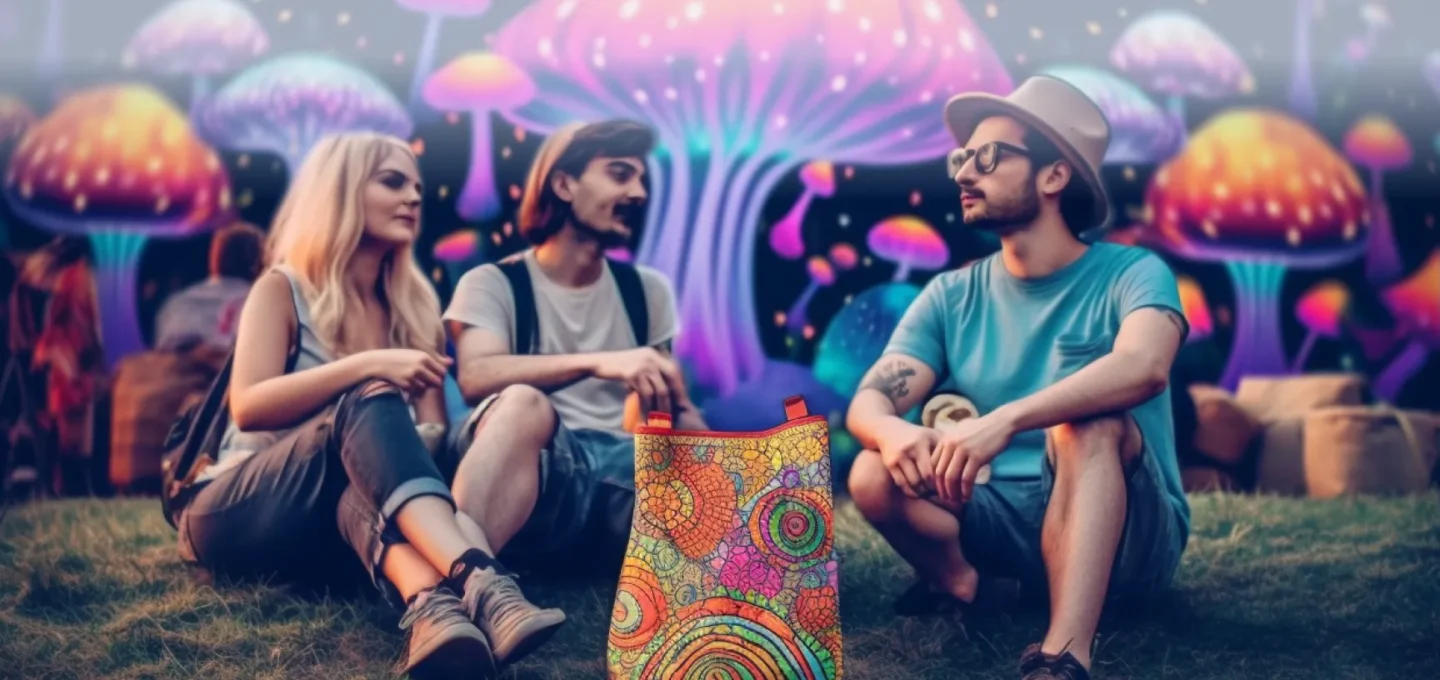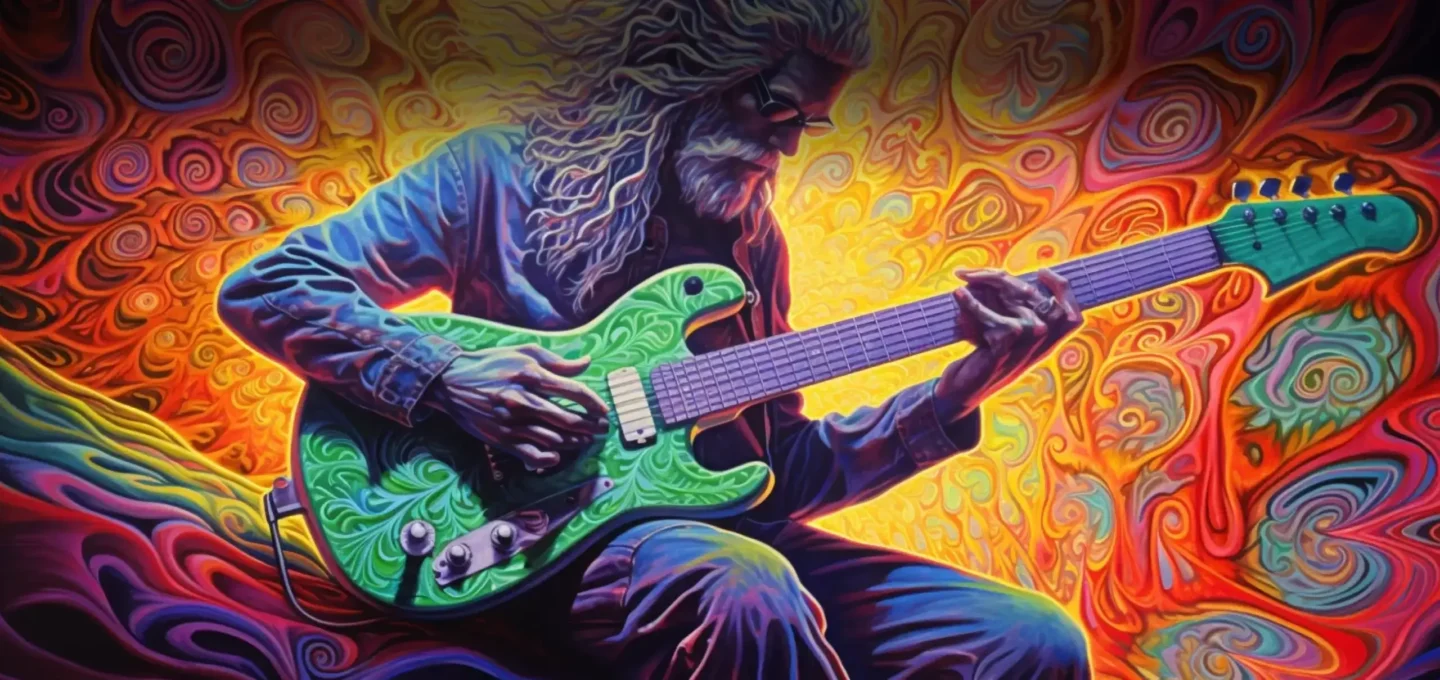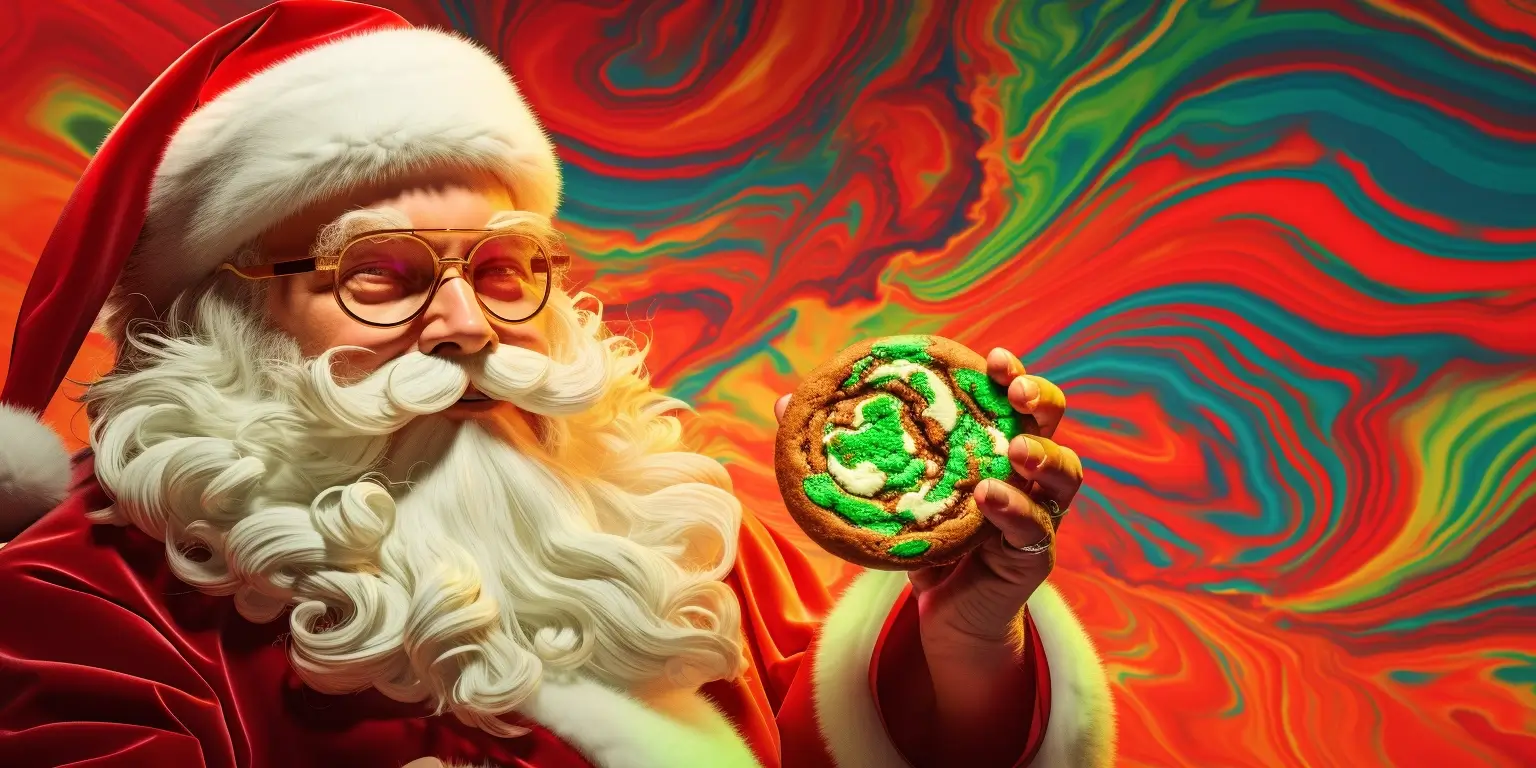T
he ancient Maya, known for their intricate art, sophisticated calendar systems, and monumental architecture, also left behind enigmatic artifacts that continue to fascinate: the mushroom stones. These stone carvings, dating back to the Preclassic period (2000 BCE to 250 CE), have sparked theories about their connection to the ritual use of psilocybin, a hallucinogenic compound found in certain mushrooms. (1)
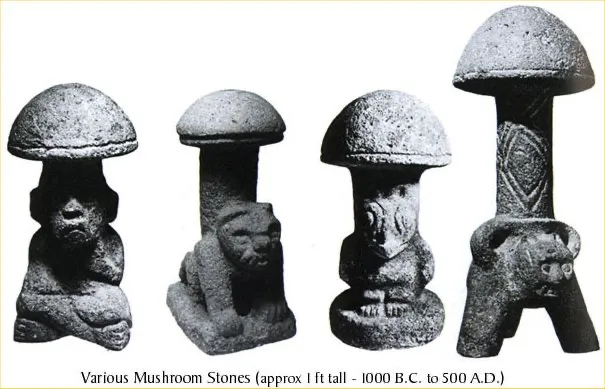
Source: Wikimedia.org
Psilocybin mushrooms have been used in various cultures for their psychoactive properties, often in religious or shamanic contexts. Evidence suggests the Maya, deeply spiritual and connected to the natural world, may have incorporated these substances into their rituals. The mushroom stones, with their distinctive mushroom-like shape, are thought to be a physical representation of this practice, serving as a link between the earthly and the spiritual, the human and the divine.(1)
Magic Mushroom Stones: Religious Symbols or Psychedelic Art?
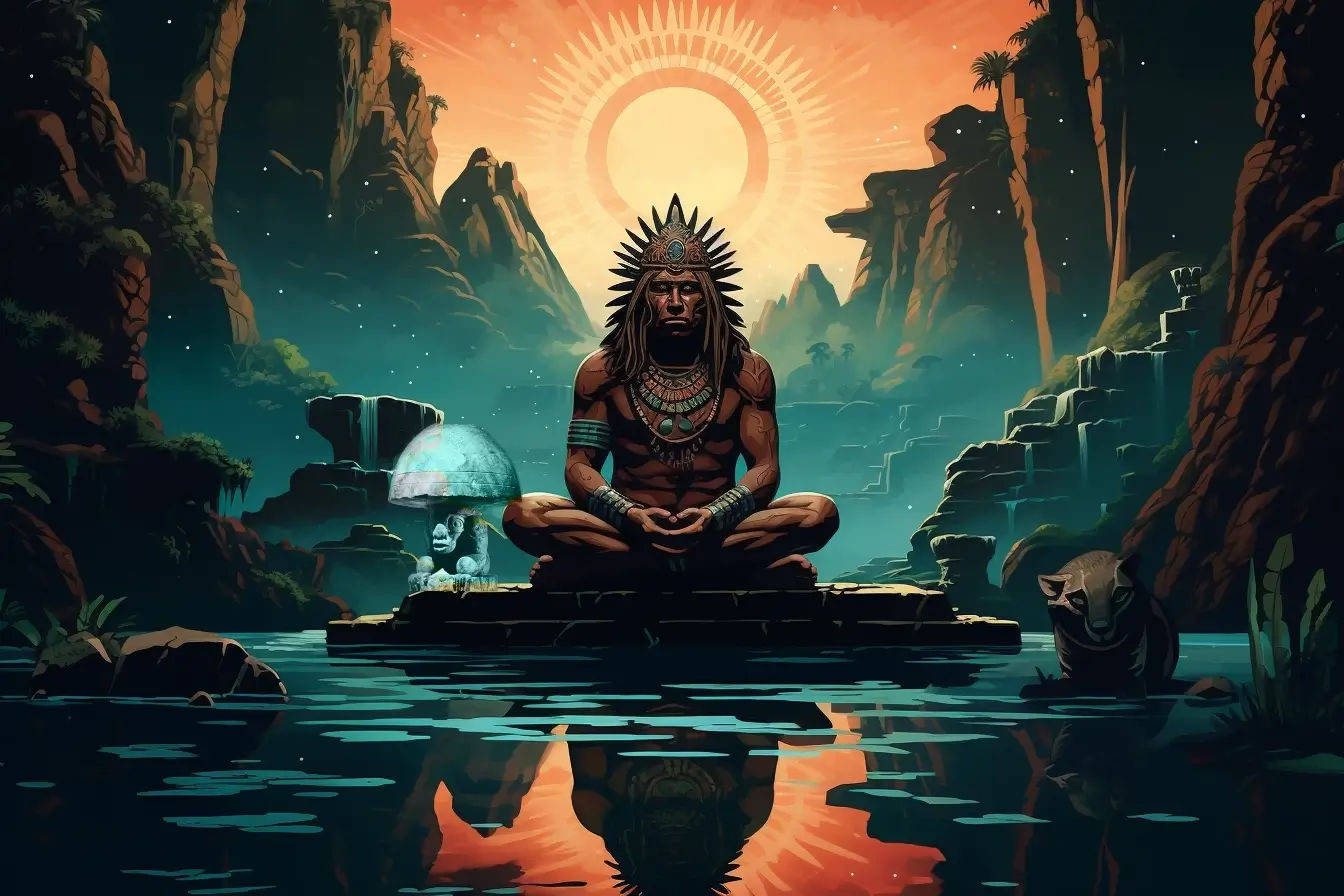
Religion and ritual played central roles in Mayan society. The Maya believed in a cosmos where the spiritual and material worlds were deeply intertwined. This worldview was reflected in their religious practices, which often involved elaborate ceremonies and offerings to deities. During the Preclassic period, the Maya significantly advanced in architecture, agriculture, and the arts. These advancements were primarily practical, but other achievements were deeply symbolic, such as advancements in art, often linked to religious beliefs and rituals.(1, 2, 3)
It’s within this rich cultural and religious environment that the mushroom stones emerged. Their presence in various archaeological sites across the modern-day Mayan region suggests a widespread significance, likely linked to these religious practices, such as the consumption of teonanàcatl (magic mushrooms) as a sacrament. During this era, we first see evidence of the creation of early Mayan mushroom stones and can begin connecting them with the Mayans’ spiritual practices and beliefs. The use of psilocybin-containing mushrooms in Mesoamerica, particularly among the Maya, provides a crucial context for understanding the significance of mushroom stones.(1, 2, 3)
Keep Up with Uncensored Psychedelic Trends
Join our newsletter at Psychedelics Uncensored.
We respect and protect your privacy. By subscribing your info will be subject to our privacy policy . Unsubscribe easily at any time
Given their rich spiritual traditions, the Mayan mushroom stones were likely part of this cultural practice. For example, the Maya were known to ingest various psychoactive plants, fungi, and animal products to provoke altered states of consciousness during rituals and healing ceremonies. The most famous of these is teonanàcatl, as mentioned above. Other psychoactive compounds used by the Maya included balché (a type of mead and Lonchocarpus extract), mescaline, and Bufo. Other contemporary cultures, such as the Olmec, pioneered the ritualistic use of tobacco and may have introduced the practice of brewing ayahuasca to the region.(1, 2, 3)
Mystery of the Mushroom Stones
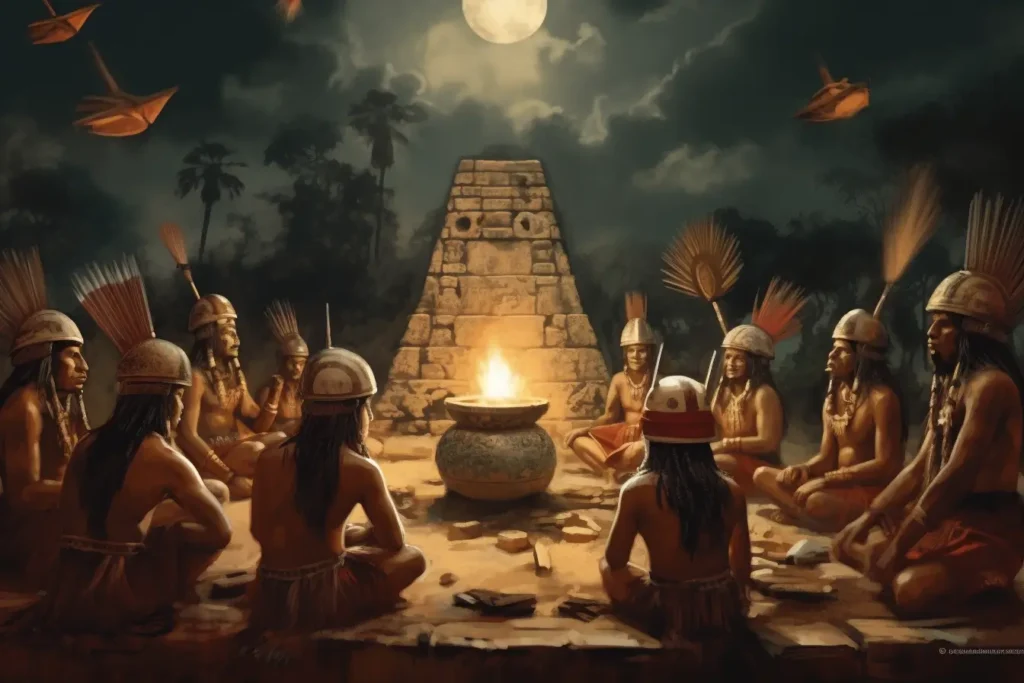
Archaeological evidence, while not explicit, provides some clues. The distribution of these stones across different Mayan regions and their prominence in certain ceremonial contexts suggests a ritualistic significance. The specific mushroom shape of these stones is seen as more than coincidental, especially considering the Mayans’ attention to symbolism in their art and artifacts. One example comes from Clifford C. Riley’s A Mayan Mushroom Stone. In his paper, Riley details how the overall shape of a mushroom may represent certain psychedelic fungi, while the body or stem of the mushroom stone is often carved to look like something of spiritual significance such as a god, an important figure, or animal spirits. (4, 5, 6, 7)
Contemporary indigenous groups in Mesoamerica that have maintained traditional practices provide living examples of how psilocybin mushrooms are used in spiritual and healing rituals. These practices often involve a spiritual leader, who guides the ritual and interprets the experiences induced by the mushrooms.(4, 5, 6, 7)
One prominent example of modern psilocybin use in Mesoamerican cultures is found among the Mazatec people in Oaxaca, Mexico. The Mazatecs, an indigenous group, have a long history of using psilocybin mushrooms in their religious and healing practices. This tradition continues today, although it has evolved and adapted over time. The most well-known aspect of this practice involves the use of “hongos sagrados” (sacred mushrooms), which contain psilocybin.(4, 5, 6, 7)
These rituals, led by a spiritual healer, known as a “curandero” or “curandera,” such as the famed Maria Sabina, typically hold deep spiritual or religious significance but are also used for healing sickness. During the ritual, participants consume the mushrooms in a controlled, sacred setting, often at night. The spiritual leader guides the experience, using prayers and chants to invoke spiritual entities and to aid in the interpretive process of the visions or insights experienced by the participants.(4, 5, 6, 7)
Keep Up with Psychedelic Trends
Get uncensored psychedelic news, events, and updates. Join Psychedelics Uncensored!
We respect and protect your privacy. By subscribing your info will be subject to our privacy policy . Unsubscribe easily at any time
Drawing parallels between these contemporary practices and ancient Mayan rituals, it’s plausible that the mushroom stones served a similar purpose. They could have been used as ceremonial objects in rituals involving psilocybin mushrooms, possibly symbolizing the mushrooms themselves or serving as a focal point for the ritual. This connection underscores the stones’ significance beyond mere artistic creations, hinting at their role in facilitating spiritual experiences and connecting the Maya with the divine or unseen realms.
The artistic details on Mayan mushroom stones reveal much about their potential ritual significance. With its unique design and craftsmanship, each stone might have served as a ceremonial object and symbol of deeper spiritual meanings. The intricate carvings on some of these stones could represent various aspects of Mayan mythology or specific deities. The mushroom itself, a recurring motif in Mesoamerican art, was likely a powerful symbol in Mayan culture, possibly associated with rebirth, transformation, or communication with the spiritual realms.(4, 5, 6, 7)
Another possible explanation of mushroom stone symbology can be found in the way a specific figure is carved. Using a stone with a stem carved into the shape of a squirrel, Riley postulates that the shape of the tail, a question mark, may represent “that which is behind,” or new beginnings. However, the true meaning behind how each stone is carved is unknown and can only be speculated on.(8)
When viewed in the context of Mayan religious practices, these artistic expressions suggest that the mushroom stones were more than just representations of psilocybin mushrooms. They were likely integral to the rituals themselves, perhaps used in ceremonies to facilitate communication with the gods, as part of healing practices, or in rites of passage.(4, 5, 6, 7)
Modern Interpretations and Continuing Mysteries
Contemporary perspectives on Mayan mushroom stones, particularly their connection to psilocybin, evolve as new research and archaeological discoveries emerge. Modern scholars and researchers approach these artifacts with a blend of scientific analysis and respect for their cultural and spiritual significance.
Advancements in archaeological methods, such as more precise dating techniques and chemical analysis, offer fresh insights into the use and meaning of these stones, such as when they were made and each stone’s possible meaning. Ethnobotanical studies provide a deeper understanding of the role of psychoactive substances in ancient cultures, including the Maya. However, no single theory fully unravels the mystery of Mayan mushroom stones. While most researchers believe they hold some ritual significance, there is a chance that they could be nothing more than an interesting cultural phenomenon akin to modern-day collectibles, Faberge Eggs, or Beanie Babies.
While the connection between the stones and psilocybin rituals is compelling, it is not definitively proven. This ongoing research sheds light on the ancient Maya and contributes to a broader understanding of the use of psychoactive substances in historical and cultural contexts. The Mayan mushroom stones, as enigmatic as they are, continue to be a source of fascination and mystery, bridging ancient art with modern scientific and cultural exploration.
Sources

1. Preclassic Period | MESOAMERICAN Research Center. (n.d.). Www.marc.ucsb.edu. https://www.marc.ucsb.edu/research/maya/ancient-maya-civilization/preclassic-period
2. Carod-Artal, F. J. (2015). Hallucinogenic drugs in pre-Columbian Mesoamerican cultures. Neurologia (Barcelona, Spain), 30(1), 42–49. https://doi.org/10.1016/j.nrl.2011.07.003
3. de Rios, M. D., Alger, N., Crumrine, N. R., Furst, P. T., Harman, R. C., Hellmuth, N. M., Hopkins, N. A., King, W. C., Koss, J. D., La Barre, W., Landar, H. J., Long, J. K., Proskouriakoff, T., Rubel, A. J., Samaranch, F., Thompson, J. E. S., & Wescott, R. W. (1974). The Influence of Psychotropic Flora and Fauna on Maya Religion [and Comments and Reply]. Current Anthropology, 15(2), 147–164. https://www.jstor.org/stable/2740991
4. Samorini, G. (2019). The oldest archeological data evidencing the relationship of Homo sapiens with psychoactive plants: A worldwide overview. Journal of Psychedelic Studies, 3(2), 63–80. https://doi.org/10.1556/2054.2019.008
5. Plants of Mind and Spirit – Teonanacatl Mushrooms. (n.d.). Www.fs.usda.gov. https://www.fs.usda.gov/wildflowers/ethnobotany/Mind_and_Spirit/teonanacatl.shtml
6. Lowy, B. (1971). New Records of Mushroom Stones from Guatemala. Mycologia, 63(5), 983. https://doi.org/10.2307/3757901
7. Mazatec Shamanic Knowledge and Psilocybin Mushrooms. (2022, February 10). Chacruna. https://chacruna.net/mazatec-shamanism-and-psilocybin-mushrooms/
8. Richey, C. C. (n.d.). A Mayan Stone Mushroom. Www.academia.edu. Retrieved December 19, 2023, from https://www.academia.edu/34345158/A_Mayan_Stone_Mushroom
This material is not intended as a replacement or substitute for any legal or medical advice. Always consult a medical professional about your health needs. Psychedelics are widely illegal in the United States, and readers should always be informed about local, state, and federal regulations regarding psychedelics or other drugs.
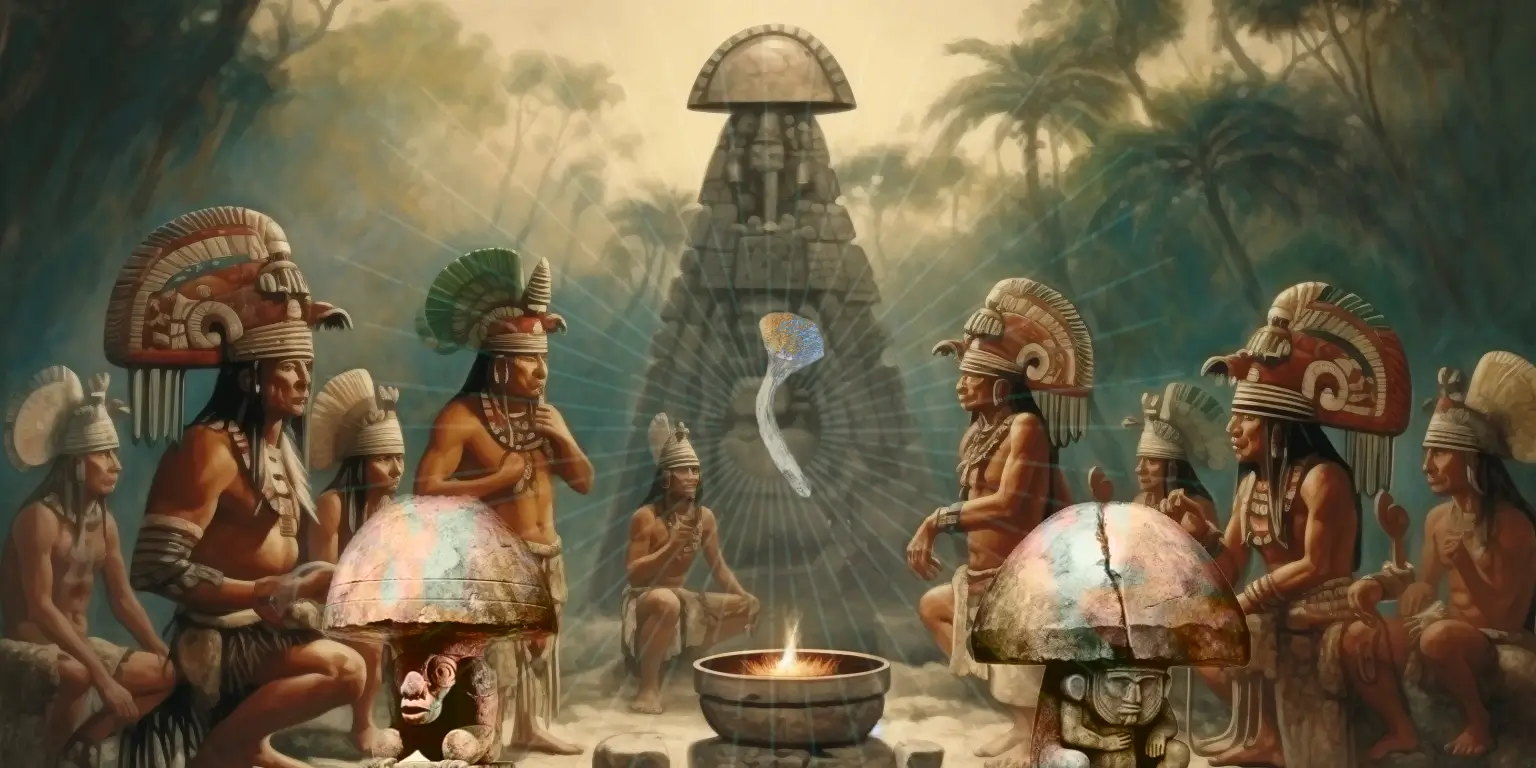
 David Connell
David Connell
